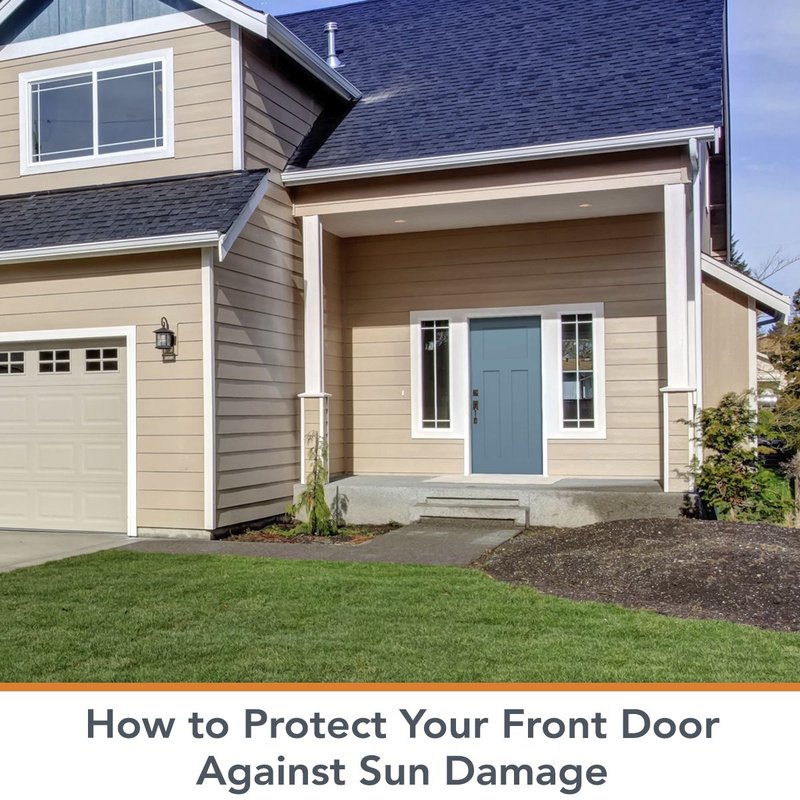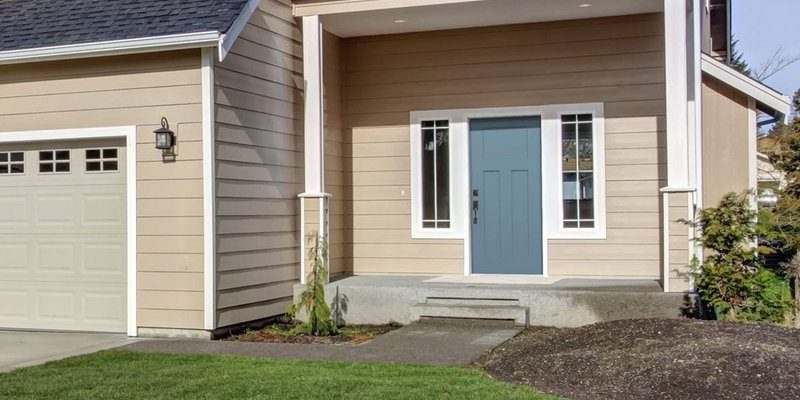
Honestly, your door handles and locks take a beating—especially if you’ve got a sun-facing entryway. Heat, UV rays, and afternoon glare act like a slow-motion sandblaster on metal, paint, and plastic. Brands like Schlage, Kwikset, Yale, and others all face this challenge. Whether you just installed a modern smart lock or use a simple lever handle, knowing how to protect exterior door hardware from sun damage can make your locks last years longer—and look better doing it.
Why Sunlight Wears Out Exterior Door Hardware
Let’s start with the basics. You might be wondering why the sun is such a big deal for something as tough as metal door hardware. Well, it comes down to *ultraviolet (UV) rays* and heat. Most metals—think brass, stainless steel, iron, or zinc—have protective coatings or finishes. These can fade, crack, or peel under constant sunlight. Once the coating is gone, the raw metal underneath is exposed to oxidation (rust), fingerprints, and grime.
Temperature swings are another problem. Metal expands in direct sun and shrinks when things cool off. Over time, this can cause finishes to bubble or lift, and seals inside locks or keypads can dry out. If you have a smart lock with a code or touchpad, UV rays can fade the numbers or even mess with plastic parts, making the keypad unreliable.
Here’s the thing: modern door hardware brands like Schlage and Kwikset usually include a UV-resistant coating, but even the toughest finish will wear down if you leave it completely exposed for years. So, it’s not pointless to care for your hardware—it’s actually one of the easiest ways to keep your front door looking great.
Signs of Sun Damage on Door Handles, Locks, and Keypads
Catching sun damage early is half the battle. What should you look for? The signs are usually pretty obvious, even from a distance.
- Fading or discoloration: Finishes look dull or the color changes compared to a shaded side door handle.
- Cracking or peeling: The clear coat starts to lift, exposing flaky spots, especially on the top and front of the handle.
- Pitting or corrosion: Small spots on the metal become rough or gritty—think of how a bike rusts if left in the rain.
- Sticky or hard-to-turn locks: This one is sneaky: the mechanism inside the lock or keypad can swell or dry out from sun and heat, making it stiff or sluggish.
- Number pad fading: On electronic locks, the digits might look washed out or even disappear, making it tough to use your code.
If you notice any of these, don’t panic! Most damage can be slowed down or reversed with the right fix. The key is to act early—you’ll save time, money, and maybe even spare yourself a lockout.
Simple Methods to Shield Exterior Door Hardware From Sun
Protecting your hardware doesn’t need to be complicated. In fact, a few simple habits can make a huge difference.
1. Regular cleaning and gentle care: Wipe your handles and locks every couple of weeks with a soft, damp cloth—no harsh chemicals needed. This removes dust, pollen, and grime that can speed up sun damage. If you spot buildup, a little dish soap and water go a long way.
2. Apply a UV-protective wax or polish: Hardware waxes (like car wax or specialty metal polish) create a temporary barrier against UV rays. Rub a thin layer onto dry hardware, let it set, then buff lightly. Reapply every month or two—especially during summer.
3. Lubricate moving parts: Heat and sun will dry out the internal workings of your lock. Once a season, use a lock lubricant (never oil or WD-40) to keep things turning smoothly. This simple step keeps your code keypad or keyhole working, even in hot weather.
Here’s the secret: these habits take just minutes, but they prevent hours of repairs down the road.
Physical Barriers: Shields, Awnings, and Smart Placement
Sometimes, the best protection for exterior door hardware is just keeping the sun off it in the first place.
Install a door awning or canopy: If your entryway bakes in direct sunlight, a small awning makes a world of difference. These come in all styles—from classic metal to sleek acrylic—and can blend right into your home’s look. Not only does this reduce UV exposure, but it keeps rain and snow off your door as well.
Add a handle shield or cover: Specialty shields snap onto door handles, deadbolts, or keypads. Some are clear plastic, while others match your hardware. They block sunlight from hitting the sensitive areas (like electronic keypads) and are easy to swap out if they get cloudy over time.
Re-think door placement during renovations: This one’s for major remodels or new homes: if you’re planning a new entry, try to choose a location with at least partial shade—maybe under a porch roof or away from the strongest midday sun.
You might be surprised just how much of a difference a little shade can make. Sometimes, the difference between a faded keypad and a perfect one is a single hour less of direct sun each day.
Example: Adding a Small Awning
My neighbor, Karen, had a problem with her keyless Yale front lock—the numbers kept fading every summer. She finally added a simple canvas awning over the door and, honestly, hasn’t had a single issue since. Sunlight hits the awning, not the keypad. Her hardware looks brand new.
Best Materials for Sun-Resistant Exterior Door Hardware
If you’re shopping for new handles, locks, or deadbolts, material choice matters more than you might think.
Stainless steel: It’s tough, resists rust, and doesn’t pit as easily as brass or zinc. Most modern smart locks (like Schlage Encode) use stainless steel for the body and keypad cover because it stands up to both sun and rain.
Solid brass (with a clear UV coating): Brass is classic and beautiful, but it needs a protective coating or it’ll tarnish quickly. Look for brands that tout “lifetime finish warranties” or “UV-resistant lacquers.” This signals you’re getting the good stuff.
Powder-coated finishes: Black, bronze, or colored handles often use a special powder-coat paint. This is more durable than spray paint—just make sure to avoid chipping the surface, or UV rays can sneak underneath and cause bubbling.
Plastic parts and electronic keypads: If you love the look (and convenience) of a keypad lock, make sure the numbers are laser-etched instead of just painted on. Painted numbers will fade, but etched ones last longer even in full sun.
Long story short: If you want hardware that’ll stand up to years of sun, go for reputable brands and check the specs for UV resistance.
When to Repair or Replace Sun-Damaged Door Hardware
Here’s the tough call: when is it time to fix, and when should you toss and replace?
Light damage: If the finish is just a bit faded or has a few small spots, polish and wax should do the trick. Sometimes, you can even buy touch-up kits from the manufacturer for minor scratches or flakes.
Moderate damage: If the handle finish is peeling, or the keypad is hard to read but still works, you can try a gentle sanding and re-coating with a UV-resistant spray (made for outdoor metal). It won’t be perfect, but you can squeeze a couple more years out of it.
Major damage: If the lock sticks, the mechanism is warped, or your code keypad no longer registers, it’s time for a new one. Sun-baked plastic can get brittle, too—don’t risk a broken lock, especially on a main entry door.
It’s always a pain to replace hardware, but nothing’s worse than getting locked out because of a faded keypad or rusted lock. If you do go for new hardware, install it during early morning or on a cloudy day—metal expands in sun and can be tough to remove or install mid-afternoon.
Extra Tips for Smart Locks and Electronic Keypads
Keyless entry systems bring their own sun trouble. Sunlight can fry electronics, fade numbers, or drain batteries faster than you’d expect.
Rotate the lock cover: Some Schlage, Kwikset, and Yale smart locks have snap-on covers. Rotate the cover periodically to even out sun exposure, or swap between shaded and sunny spots if you have multiple entries.
Check the battery often: Direct sun and heat can make batteries drain faster. If your keypad gets sluggish or unresponsive, replace the battery right away (and try to keep spare batteries on hand). Heat can also cause batteries to leak or swell, so swap them as soon as you see any odd behavior.
Sync or reset as needed: Sometimes, sun exposure can mess with touch sensors or screens. If your keypad acts up, try a simple reset or re-sync per your lock’s instructions. If problems get worse after a hot spell, sun exposure might be part of the issue.
Quick fix: To prevent code buttons from fading, stick a piece of light-colored tape above the keypad to shade the numbers. It looks odd, but works in a pinch.
Comparing DIY Solutions vs. Professional Hardware Protection
You have two main options: go the DIY route or invest in professional upgrades.
DIY fixes:
- Clean and wax regularly using household supplies
- Stick-on shades or basic shields for keypads and locks
- Spray-on UV protectant (like for patio furniture)
These are cheap, quick, and easy. They work well for most homes, especially if you stay on top of them.
Professional options:
- Custom door awnings or permanent canopies
- High-end hardware with lifetime finish warranties (Schlage, Kwikset, Emtek)
- Factory-grade UV coatings applied by a pro
- Universal hardware covers designed for heavy sun
Professional solutions cost more upfront, but they’re best for extra-sunny locations or for anyone who wants an easy, long-lasting answer. If you’re always fighting with faded or peeling hardware, it may be worth the upgrade.
Closing Thoughts
Protecting exterior door hardware from sun damage isn’t just about making things look nice—it’s about keeping your home secure and saving yourself hassle down the line. With a little care, the right materials, and a few clever tricks, your door handles, locks, and keypads can survive summer after summer. Next time you walk up to your front porch and see that hardware gleaming in the sun, you’ll know you’ve got things covered—literally and figuratively.
